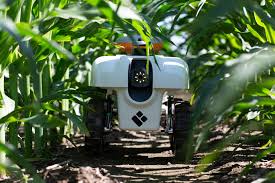
Breaking News
 Windows 10 is DEAD in 2025? -- Here's How I Run It SAFELY Forever (No Updates)
Windows 10 is DEAD in 2025? -- Here's How I Run It SAFELY Forever (No Updates)
 GENIUS ACT TRIGGERED: The Biggest BANK RUN in History is COMING – Prepare NOW
GENIUS ACT TRIGGERED: The Biggest BANK RUN in History is COMING – Prepare NOW
 European Billionaires Funneled $2 Billion into NGO Network to Fund Anti-Trump Protest Machine
European Billionaires Funneled $2 Billion into NGO Network to Fund Anti-Trump Protest Machine
 Japan Confirms Over 600,000 Citizens Killed by COVID mRNA 'Vaccines'
Japan Confirms Over 600,000 Citizens Killed by COVID mRNA 'Vaccines'
Top Tech News
 HUGE 32kWh LiFePO4 DIY Battery w/ 628Ah Cells! 90 Minute Build
HUGE 32kWh LiFePO4 DIY Battery w/ 628Ah Cells! 90 Minute Build
 What Has Bitcoin Become 17 Years After Satoshi Nakamoto Published The Whitepaper?
What Has Bitcoin Become 17 Years After Satoshi Nakamoto Published The Whitepaper?
 Japan just injected artificial blood into a human. No blood type needed. No refrigeration.
Japan just injected artificial blood into a human. No blood type needed. No refrigeration.
 The 6 Best LLM Tools To Run Models Locally
The 6 Best LLM Tools To Run Models Locally
 Testing My First Sodium-Ion Solar Battery
Testing My First Sodium-Ion Solar Battery
 A man once paralyzed from the waist down now stands on his own, not with machines or wires,...
A man once paralyzed from the waist down now stands on his own, not with machines or wires,...
 Review: Thumb-sized thermal camera turns your phone into a smart tool
Review: Thumb-sized thermal camera turns your phone into a smart tool
 Army To Bring Nuclear Microreactors To Its Bases By 2028
Army To Bring Nuclear Microreactors To Its Bases By 2028
 Nissan Says It's On Track For Solid-State Batteries That Double EV Range By 2028
Nissan Says It's On Track For Solid-State Batteries That Double EV Range By 2028
A Growing Presence on the Farm: Robots

In a research field off Highway 54 last autumn, corn stalks shimmered in rows 40-feet deep. Girish Chowdhary, an agricultural engineer at the University of Illinois at Urbana-Champaign, bent to place a small white robot at the edge of a row marked 103. The robot, named TerraSentia, resembled a souped up version of a lawn mower, with all-terrain wheels and a high-resolution camera on each side.
In much the same way that self-driving cars "see" their surroundings, TerraSentia navigates a field by sending out thousands of laser pulses to scan its environment. A few clicks on a tablet were all that were needed to orient the robot at the start of the row before it took off, squeaking slightly as it drove over ruts in the field.
"It's going to measure the height of each plant," Dr. Chowdhary said.
It would do that and more. The robot is designed to generate the most detailed portrait possible of a field, from the size and health of the plants, to the number and quality of ears each corn plant will produce by the end of the season, so that agronomists can breed even better crops in the future. In addition to plant height, TerraSentia can measure stem diameter, leaf-area index and "stand count" — the number of live grain- or fruit-producing plants — or all of those traits at once. And Dr. Chowdhary is working on adding even more traits, or phenotypes, to the list with the help of colleagues at EarthSense, a spinoff company that he created to manufacture more robots.

 Carbon based computers that run on iron
Carbon based computers that run on iron

